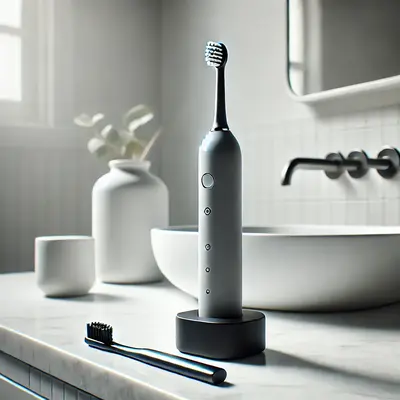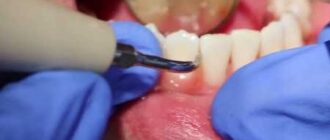Preventive dentistry is the foundation of a healthy smile and, quite frankly, a healthy wallet. If you think preventive care is all about bi-annual cleanings, think again. Modern dentistry has shifted focus towards proactive care, emphasizing early detection and maintenance over invasive treatments. The goal is simple: stop problems before they start. But what exactly does that look like in 2024, and how can you maximize your dental health today?
Why Prevention Matters: The Facts and Figures
Let’s get one thing straight—prevention is not just about brushing your teeth twice a day. The data speaks volumes. According to the Centers for Disease Control and Prevention (CDC), 26% of adults aged 20 to 64 currently live with untreated tooth decay. Yet, this issue is preventable for most people if addressed early with the right strategies. The American Dental Association (ADA) has estimated that regular preventive dental visits can reduce the need for extensive procedures by up to 60%.
Table: Cost Comparison Between Preventive and Restorative Care
| Procedure | Average Cost (USD) | Preventive Frequency | Notes |
|---|---|---|---|
| Routine Dental Cleaning | $75 – $200 | Twice a year | Essential for plaque and tartar removal |
| Dental Filling | $150 – $400 | As needed | Often avoidable with preventive care |
| Root Canal Treatment | $700 – $1,500 | As needed | Typically results from untreated decay |
| Dental Crown | $800 – $3,000 | As needed | Often required after root canal |
The disparity in costs is evident. A basic cleaning could cost less than $200, whereas a root canal and crown might cost over $4,000 altogether. Beyond the financials, it’s important to realize that preventive care reduces the risk of pain, discomfort, and the need for complex procedures.
Emerging Trends in Preventive Dentistry
In recent years, advances in preventive dentistry have revolutionized the way we think about dental health. No longer is it just about avoiding cavities—it’s about proactive intervention.
1. Sealants for Adults: Most people associate dental sealants with children, but adults are now using them to protect molars from cavities. Research from the ADA suggests that sealants can reduce decay by up to 80% in molars. Given that molars are often the hardest to keep clean, this added layer of protection is proving beneficial for adults at risk.
2. The Rise of Fluoride Varnishes: Fluoride is not new, but the way it’s used has evolved. Fluoride varnishes, which are applied during dental visits, have been shown to decrease the risk of tooth decay in high-risk individuals. These treatments are particularly valuable for adults with a history of dental issues.
3. Smart Toothbrushes and Apps: Technology is stepping in to improve how we brush. Smart toothbrushes, paired with dental apps, monitor brushing time, technique, and even the areas you miss. A 2023 study in the Journal of Dental Research found that users of smart toothbrushes had 25% fewer cavities compared to those using regular brushes.
The Lifestyle Factors: Diet and Hygiene
It’s no secret that sugar is the enemy. But it’s not just about avoiding sweets; the kind of sugar and how often you consume it plays a crucial role. Sticky sugars, like those found in candy, are worse because they cling to teeth longer. On the other hand, natural sugars found in fruits are less harmful, particularly if you consume them with water.
The ADA recommends focusing on a diet that limits sugary snacks, includes more fiber-rich vegetables, and, importantly, ensures adequate calcium and Vitamin D. These nutrients are vital for keeping teeth strong and resilient.
Avoid Alcohol and Smoking—A Non-Negotiable
Alcohol and smoking are two lifestyle factors that significantly increase the risk of oral issues, including gum disease and oral cancer. According to the World Health Organization (WHO), smokers are seven times more likely to suffer from gum disease than non-smokers. Alcohol, on the other hand, can dry out the mouth, reducing saliva production, which is key in neutralizing acids that harm tooth enamel. Full cessation of both is the best step you can take for not only your dental health but your overall well-being.
Routine Professional Care: What to Expect
Cleanings: A professional cleaning goes beyond what your regular toothbrush can achieve. Dental hygienists use specialized tools to remove plaque buildup and tartar that brushing and flossing can’t reach. Plaque hardens into tartar within 48 hours, and tartar can only be removed by a professional, making regular cleanings essential.
Oral Cancer Screenings: An often-overlooked component of preventive dentistry is oral cancer screenings. Each year, more than 54,000 Americans are diagnosed with oral or oropharyngeal cancer. Early detection is key, and routine dental visits include quick and non-invasive screenings that could be life-saving.
Periodontal Care: Gum health is often ignored until it becomes a problem. Periodontal (gum) maintenance appointments are recommended, especially for those with early signs of gum disease, to avoid more invasive treatments down the line.
Our Editorial Advice: Invest in Prevention for a Healthier Future
When it comes to preventive dentistry, it’s all about playing the long game. A few minutes a day dedicated to proper brushing, flossing, and avoiding harmful habits can save you a lot—financially and physically. Remember, preventive care is an investment, not an expense. Focus on a balanced diet, regular dental visits, and emerging tools like smart toothbrushes. Don’t wait for problems to show up; take action today for a healthier, happier smile tomorrow.






